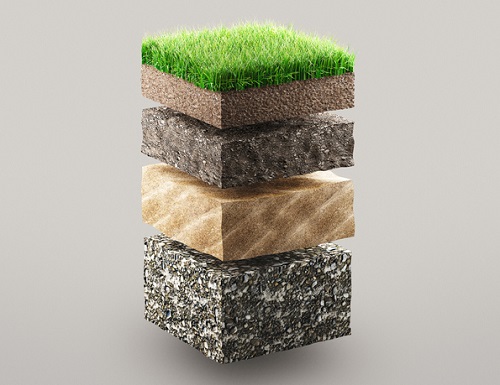As America looks to upgrade its aging infrastructure and bring it into the future, the focus is on non-destructive testing (NDT) methods that can help determine what is broken and needs repaired without taking expensive and destructive samples with drills.
The best NDT method out there? Ground penetrating radar.
GPR is highly versatile — the radar signals can be used to assess rock, soil, ice, freshwater, pavement and concrete structures, as well as find underground objects, voids and cracks. It has quickly made a name for itself as being the most accurate geophysical technology. Additionally, it is easy on the budget. You can scan an entire site for less than it costs to drill one borehole.
Experts expect that the push for new infrastructure will result in a high-growth rate for GPR in through 2024 as the nation finds and identifies failing underground utilities such as sewer lines, gas lines and water lines.
On top of underground utilities, GPR is being implemented to examine deteriorating roads, railways, bridges and dams across the United States.
GPR for ROADS
An ever-growing number of Americans drive on over 4 million miles of public roads each day — and of these roads, 43 percent are in poor or mediocre condition.
This number has remained stagnant for several years, showing how hard it is to maintain and repair roads.
GPR helps speed up the process by providing information about the thickness of layers of asphalt and pavement. It also locates defects within the layers, such as voids or delamination. Newer research scans for water presence in the layers that can point to cracks.
Another predictor of a deteriorating road is examining asphalt compaction by checking the material’s air void content. Asphalt with too many or too few air voids deteriorates at a faster rate and could kill the life of the road.
- Layer thickness
- Detection of cracks and voids under the pavement, including the analysis of possible
causes (weather, loads, roots, etc.)
- Quality control of asphalt and compaction
- Moisture and changes of water content
GPR for RAILWAYS
Amtrak, the national intercity passenger carrier, has a 21,400-mile network, with 70% of those miles owned by other railroads. The U.S. rail network is composed of hundreds of thousands of miles, and each day 1.7 million tons are transported around the country.
GPR is used to detect changes in the railroad track structure and substructure, as well as testing ballast fouling and moisture content.
| What GPR can detect in railways: ● Layer thickness measurement, mainly ballast ● Embankment defects and moisture ● Location of ballast pockets and trapped water ● Frost susceptible areas ● Fouled ballasts |
GPR in TUNNELING
If you’re looking for a good reason to use GPR for finding tunnel structure issues, look no further than the Cumberland Gap Tunnel case.
This tunnel, linking Kentucky and Tennessee, had major pavement settling only 10 years after its completion. It turns out that the sub-base was being washed away by the groundwater.
GPR was used to find areas where there were serious voids and the steel structure was the only thing keeping the tunnel from collapsing.
The precise information provided by the GPR helped slash the costs of the repairs.
| What GPR can detect in tunneling: ● Thickness of concrete lining and backfill grouting ● Damages in concrete lining and grouting layer ● Moisture/water content ● Depth and location of reinforcement (rebar) ● Inspection of other reinforced concrete structures ● Location of immersion joints ● Identification of depth and presence of insulation material |
GPR in BRIDGES
Did you know that 42 percent of the more than 617,000 bridges in the U.S. are at least 50 years old? And that 7.5 percent of these bridges are in poor condition?
That’s an awful lot of bridges to fix. GPR to the rescue!
GPR is starting to gain traction as being a reliable predictor of deterioration in >concrete bridge decks. It collects wave reflections compared with the rebar to determine the condition of the rebar and concrete above it.
And, conversely, GPR can be used to check the quality of a newly built bridge deck by checking the depth of the rebar.
| What GPR can detect in bridges: ● Location and quality of delaminated concrete ● Depth of the steel rebar ● Thickness of the bridge deck and asphalt road |
GPR in DAMS
The nearly 100,000 dams in the U.S. are in almost the same shape as bridges — the average age being 57 years old.
Concrete inspection is necessary to keep these vital structures healthy. Finding out which sections need repair and replacing is cost-effective via GPR. Just like on bridges, GPR can determine the location of a dam’s rebar and the state of its concrete slabs. It can also check for water inside the concrete to determine leaks.
GPR in Self-Driving CARS
We are starting to bridge the gap between the past and the future with autonomous vehicles, and GPR is along for the ride.
Right now, GPR is starting to be used to map the structure beneath a vehicle.
The GPR, bolted under the car behind the front wheel, scans up to 10 feet underground, making a super clear map of the soil density, pipes, voids, roots and rocks. Like a fingerprint, the road structure is unique and will be able to help autocars find their way regardless of road conditions or GPS.
GPR Specialists at Wood Inspection Services
Wood Inspection Services is at the forefront of GPR technology and has the tools to help bring your infrastructure problem up to code.
Our 3D mapping process is comprehensive and will give you a good roadmap for making cost-effective repairs.

